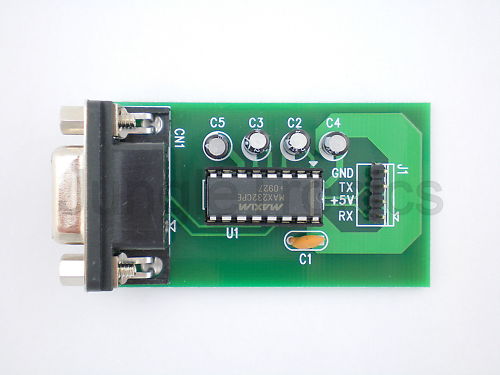If you are planning to connect your Trimble to a microcontroller as I am you will need to provide it appropriate levels as the RS-232 standard defines the voltage levels that correspond to logical one and logical zero levels for the data transmission and the control signal lines. Valid signals are plus or minus 3 to 15 volts; the ±3 V range near zero volts is not a valid RS-232 level. The standard specifies a maximum open-circuit voltage of 25 volts: signal levels of ±5 V, ±10 V, ±12 V, and ±15 V are all commonly seen depending on the power supplies available within a device. RS-232 drivers and receivers must be able to withstand indefinite short circuit to ground or to any voltage level up to ±25 volts.
The common way of interfacing RS232 to a processor is via a MAX232. Don’t forget the MAX232 inverts the signal so you will need to allow for that in your code.
 I took the easy way out and purchased a small module from Jungletronics (ebay) designed for this purpose. Cost a few pounds and is pretty much plug and play (except for making the interface cable to the Netduino. I also decided to put them back to back so bought a male to male gender changer too.
I took the easy way out and purchased a small module from Jungletronics (ebay) designed for this purpose. Cost a few pounds and is pretty much plug and play (except for making the interface cable to the Netduino. I also decided to put them back to back so bought a male to male gender changer too.
The Thunderbolt connects to your computer via a 9 pin serial port. Standard pins are in use.
- Not used
- Transmit (TxD)
- Receive (RxD)
- Not used
- Ground (Gnd)
- Not used
- Not used
- Not Used
- Not Used
